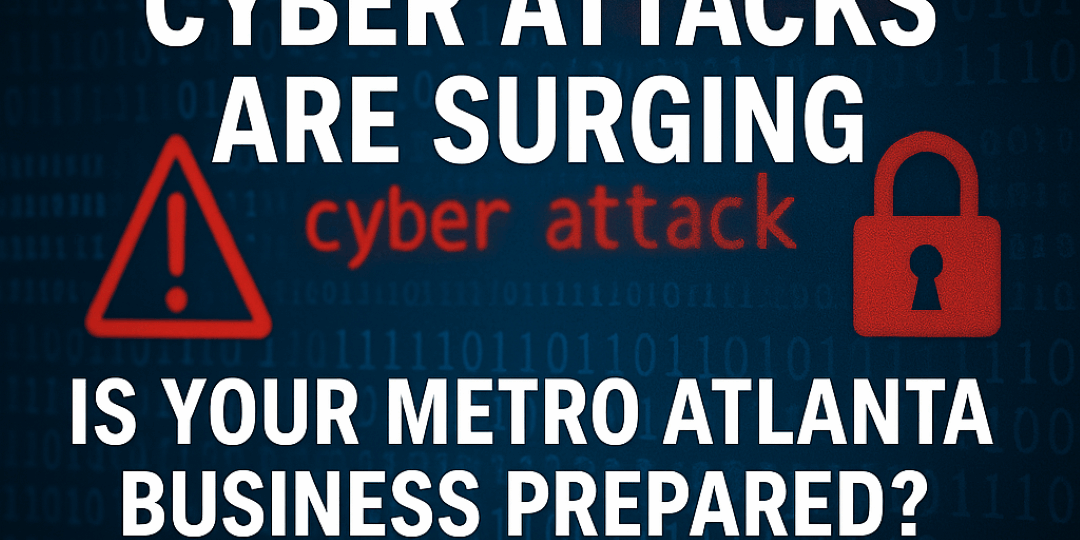Phishing Attacks Tripled Last Year- Here’s What You’re Missing
Have you ever wondered how many phishing attempts your employees face every day?
It’s probably more than you think. In fact, recent cybersecurity reports show that the number of employees clicking on phishing links TRIPLED over the last year. That’s a massive jump—and it’s costing businesses more than just a few headaches. From financial losses to data breaches and damaged reputations, phishing is one of the most dangerous threats facing small and mid-sized businesses today.
At AlphaCIS, we’ve seen firsthand how one careless click can open the floodgates to a full-blown cyberattack.
So let’s break it down.
What Exactly Is Phishing?
Phishing is a type of cyberattack where criminals pose as trusted sources to trick individuals into giving up sensitive information—such as passwords, banking info, or access credentials. These attacks are typically carried out via email, but that’s no longer the only method.
Here’s a classic example: Your employee receives an email that looks like it’s from Microsoft, asking them to reset their password. The branding looks legit. The login page looks real. But once they enter their credentials, those details are sent straight to the attacker—not to Microsoft.
From there, hackers may gain access to your email system, cloud storage, client data, financial systems, or even your entire IT infrastructure.
Phishing Is No Longer Just in Email
Today’s cybercriminals are more creative—and more persistent—than ever.
While phishing emails remain a major concern, attackers are now using a wide range of digital channels to trap unsuspecting users. These include:
- Search Engine Ads – Fake ads that appear in Google or Bing search results, leading to malicious login pages.
- Social Media Messages – Fake DMs pretending to be from colleagues, friends, or customer service agents.
- Malicious Website Comments – Links in comment sections of popular blogs and forums that lead to phishing pages.
- Online Chatbots or Pop-Ups – Fake support chat windows offering to “help” you recover your account—only to steal it instead.
Why the shift? Because attackers know your team is learning to spot phishing emails. So now they’re working overtime to stay one step ahead.
Why Are More People Falling for These Scams?
There are a few key reasons:
1. Security Fatigue
When your team is constantly bombarded with security warnings, suspicious emails, and pop-up alerts, it becomes harder to stay alert. Over time, employees may start ignoring red flags simply because they’re overwhelmed.
2. Professional-Looking Scams
Phishing emails used to be riddled with typos and obvious red flags. Not anymore. Today’s scams are slick, branded, and scarily realistic. Some even include personalized details like the employee’s name, job title, or company logo—thanks to information scraped from LinkedIn or your website.
3. Targeting Trusted Platforms
Hackers know where your critical business data lives. Microsoft 365, Google Workspace, Dropbox, Salesforce—these are all goldmines for sensitive information. If they can gain access to just one account, they can often move laterally through your systems, gaining even more control.
What’s at Risk for Your Business?
The damage from a phishing attack can be extensive, including:
- Financial Losses – From fraudulent transactions, ransomware payments, or business downtime.
- Data Breaches – Compromised client information, proprietary data, or financial records.
- Compliance Violations – Especially for businesses subject to regulations like HIPAA, PCI-DSS, or GDPR.
- Reputation Damage – Lost trust from customers, partners, and vendors.
- Operational Disruption – Recovery from an attack often takes days or weeks and can cripple productivity.
What Can You Do About It?
Phishing may be evolving, but so can your defenses. The best strategy combines education, technology, and processes.
1. Educate Your Team Regularly
Your employees are the first line of defense. Regular training should include:
- How to spot fake emails and links
- The importance of hovering over URLs before clicking
- Identifying spoofed sender addresses
- Reporting suspicious activity immediately
Use phishing simulations to test their readiness in real-world scenarios. You’d be surprised how many people click until they’re trained not to.
2. Implement Multi-Factor Authentication (MFA)
Even if an attacker gets a password, MFA adds a second layer of protection. Requiring a code from an app or device makes it much harder for unauthorized users to gain access.
3. Use Email Filtering and Security Tools
Advanced email security tools can catch phishing emails before they even reach the inbox. AI-based filters, domain spoofing protection, and link scanning are essential.
4. Keep Software Updated
Many attacks exploit outdated systems. Keeping your operating systems, apps, and plugins updated helps close security loopholes before attackers can use them.
5. Establish a Clear Cybersecurity Policy
Have clear rules in place for password management, data sharing, remote work access, and reporting threats. Your team should know exactly what to do if something seems off.
Let’s Make Sure You’re Covered
Phishing isn’t going away. It’s only getting smarter, more aggressive, and more dangerous.
The question is: will your business be prepared—or blindsided?
At AlphaCIS, we help companies like yours build rock-solid defenses with a mix of employee training, advanced cybersecurity tools, and strategic IT planning. Whether you need to upgrade your defenses or simply want a second opinion on your current setup, we’re here to help. We also offer free cybersecurity training, if you are interested, please
Book a Call With Me On My Calendar
Let’s talk about how we can turn your team from a liability into your strongest security asset.
Let me know if you’d like this formatted into a downloadable PDF or converted into a LinkedIn article or email blast!

Dmitriy Teplinskiy
I have worked in the IT industry for 15+ years. During this time I have consulted clients in accounting and finance, manufacturing, automotive and boating, retail and everything in between. My background is in Networking and Cybersecurity



